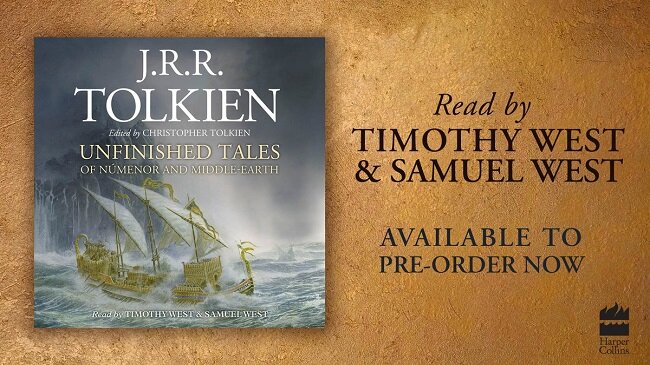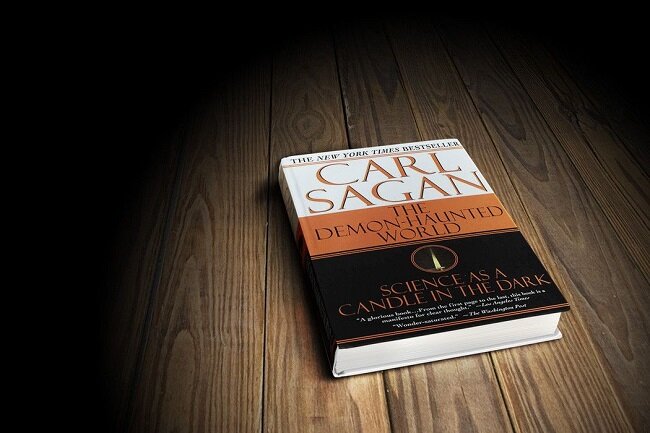The Silmarillion by J. R. R. Tolkien - Read by Martin Shaw (1998)
Let’s not be coy about this. J. R. R. Tolkien’s The Silmarillion is not in any way a light read. It has a complex narrative, filled with staggering amounts of lore to digest. I certainly wouldn’t recommend it to anyone as their first point of entry into the Tolkien Legendarium. I think this is a book that you tackle after The Hobbit and The Lord of the Rings, if you are sufficiently enamoured with the threads of a wider backstory that are alluded to in both those volumes. If that is the case then brace yourself. However, despite its sprawling histories and dense genealogies, The Silmarillion is an incredibly rewarding book. There is an air of majesty surrounding the epic stories it contains and its themes about the eternal struggle between the dark and the light are timeless. Due to the immense detail that Tolkien lavishes upon the text, Middle-earth feels like a genuine living, breathing world. A world of languages, culture, geography and history. To date it has never been equalled.
The Silmarillion is the jewel in the crown of J.R.R. Tolkien’s imaginative writing, a collection of narratives ranging in time from the Elder Days of Middle-earth, through the Second Age and the rise of Sauron, to the end of the War of the Ring. The Ainulindalë is a myth of the Creation. In the Valaquenta the nature and powers of the gods is described. Quenta Silmarillion is set in an age when Morgoth was the first Dark Lord and dwelt in Middle-earth. The Elves made war upon him in his impenetrable fortress in Angband for the recovery of the Silmarils. Three jewels containing the last remaining pure light of Valinor, seized by Morgoth and set in his iron crown. The Akallabêth recounts the downfall of the great island kingdom of Númenor at the end of the Second Age. Of the Rings of Power tells of the great events at the end of the Third Age, as told in The Lord of the Rings.
The Silmarillion is a history, albeit an invented one. The book is not linear, nor is it always chronological. It blends expository mythological texts with more traditional story-telling. Despite this structure, it is hard not to feel a sense of awe at the totality of Tolkien’s visions. The book is a prodigious chronicle, highlighting events and individuals with a scope too large to easily summarise. Needless to say, it can often be difficult to keep track of all the characters. Often one story dovetails or impacts upon another, so that it frequently feels like a single narrative rather than a collection of smaller stories. There are events such as the founding of great cities, establishing dynasties, the sundering of peoples and the inevitable waging of war. Throughout these events there is tragedy, beauty, torture, escapes, murders and betrayals. Some characters are noble where others are blighted by hubris, although it often goes ill for them. Although these tales are long and complex, they’re never dull.
The HarperCollins audiobook, recorded in 1998 by British actor Martin Shaw, is possibly the most accessible way for relatively new fans of Tolikien’s writings to tackle The Silmarillion. Shaw narrates with a strong degree of reverence that borders on religious solemnity, guiding listeners carefully through epic battles and epochal events, as well as the legions of protagonists, antagonists and side characters. Shaw skilfully handles the difficult pronunciations of Tolkien's invented languages and inspires a frisson of pleasure when he breaks the straight narration to slip into character voices. The measured pacing of his reading is invaluable to the listener in allowing them to reflect upon the unfolding story and then digest it. I would also recommend listening to this audiobook while having a map of Beleriand to hand. Seeing the geography of the regions discussed is a major asset in understanding the events described. The Silmarillion read by Martin Shaw is currently available on Audible and would make a welcome addition to any Tolkien fan’s library.











